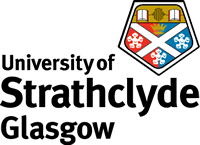Nuclear energy provides almost a fifth of the UK’s electricity, generating waste that needs to be managed for safe, long term storage. While most radioactive waste comes from the generation of electricity it is also a by-product of many medical and industrial processes, research and defense activities that make use of radioactivity and radioactive materials. In a Geological Disposal Facility (GDF), higher-activity waste is stored hundreds of metres deep underground and GDF is internationally recognised as the safest long-term solution for this type of waste. There is strong interest in understanding how the cement grout used to contain waste interacts with the backfill cement (called Nirex reference vault backfill) used to stabilise waste containers in the GDF. This project investigates rare, aged samples to determine how microstructural and physical characteristics of the Nirex reference vault backfill (NRVB): Portland cement grout interface will alter over time-scales applicable to deep geological disposal facilities. This project will use a combination of 2D X-ray diffraction and scattering, 3D/2D imaging and supporting analytical measurements to determine how the cements microstructure and porosity/permeability have developed over 10 years of hydrothermal ageing. Beamtime at Diamond Light Source, a national synchrotron facility, will be applied for to access a new small angle X-ray scattering technique called SAXS-Tensor Tomography for high resolution information on the microstructural changes. The results from this project will inform on further (future) work on radionuclide retention and reactive transport in NRVB, which requires a thorough understanding of porosity/permeability (and mineralogy) to support numerical/predictive models on radionuclide mobility. Funded by Radioactive Waste Management (RWM), this project will directly inform on improving and developing the safety case for deep geological disposal of radioactive waste.
The successful candidate will be trained in and use techniques such as micro-(X-ray diffraction), electron probe micro-analysis, X-ray computed tomography and access national facilities such as Diamond Light Source, to determine how mineralogy, micro-strain, porosity and permeability of the NRVB:cement grout interface have altered over 10 years. The candidate has a unique opportunity to gain some industrial experience at Radioactive Waste Management (Oxfordshire) to understand their working environment first hand and make an impact on an important problem, while learning high-level and cutting-edge scientific techniques at Strathclyde. The student will be based in the Faculty of Engineering, one of the largest and most successful engineering faculties in the UK, and the largest in Scotland. The student will be supervised by an interdisciplinary team, including Drs Andrea Hamilton, Pieter Bots and Kate Dobson in Civil and Environmental Engineering (CEE) and Dr Paul Edwards in the Physics Department.
We are looking for a highly motivated person to undertake multi-disciplinary research. Applicants should have an excellent undergraduate degree (MSc/MEng/BSc/BEng) in Physics/Chemistry/Chemical Engineering/Materials, Science, or related subjects, and be comfortable working in physics, chemistry and engineering laboratories. Any previous experience using Matlab or similar is advantageous.
HOW TO APPLY:
Contact Dr Andrea Hamilton in the first instance ([Email Address Removed]) and as soon as possible, indicating your motivation to apply, your CV and outline any experience you have working in a laboratory.

 Continue with Facebook
Continue with Facebook




